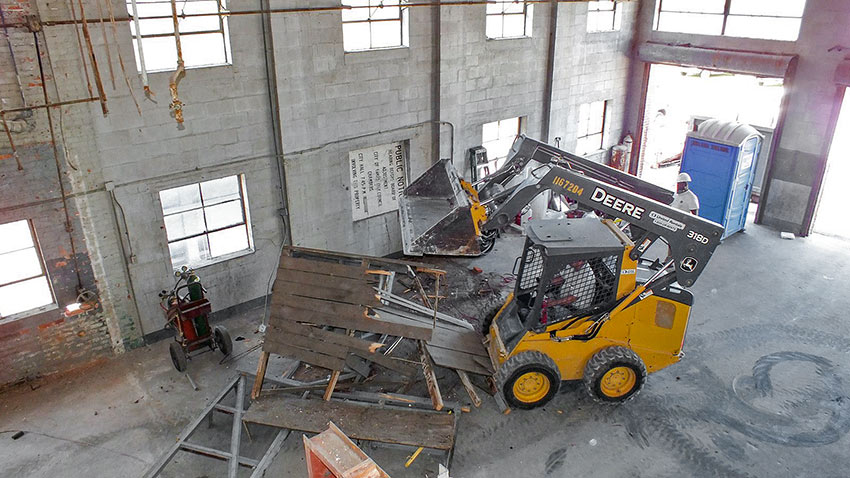A BRIEF HISTORY OF
SOME OF TAMPA'S WATERWORKS & SPRINGS
THE GOVERNMENT SPRING
A historical marker formerly located near 5th Avenue and 13th
Street, erected by the Ybor City Rotary Club, commemorated the
site of a historic spring which served as the earliest source of
water for
Fort Brooke and an Indian encampment. It read:
Tampa's oldest and most romantic landmark.
For centuries the ancient Timuquan Indian Tribes used this
spring as a shrine to their water-gods. The Spanish
Conquistadores tarried here, and the early pioneers found
sustenance from the magic waters. For more than 60 years this
spring supplied water for Fort Brooke. During the Seminole
Indian Wars famous history making men planned their campaigns
here. Among them were: General Winfield Scott, General Zachary
Taylor, General David E. Twiggs, General Edmund P. Gaines,
General Thomas H. Jessup, and General Abraham Eustis. In 1896
Florida's first brewery was erected here. For many years the
pure water from this famous spring was used to brew La
Tropical Beer.
 The
first road connecting Fort Brooke to Fort King near present-day
Ocala, about one hundred miles away, was constructed by the U.S.
army in 1825 and ran through the heart of the wilds of today's
Ybor City, with two offshoots leading to the spring. The
first road connecting Fort Brooke to Fort King near present-day
Ocala, about one hundred miles away, was constructed by the U.S.
army in 1825 and ran through the heart of the wilds of today's
Ybor City, with two offshoots leading to the spring.
The road was built from Ft. Brooke (now the Channelside area)
through the salt marshes of what was the Ybor Estuary (the Port of
Tampa area) to the large spring at the present site of Fifth
Avenue and Thirteenth Street.
Since the spring was located on government land, the spring was
named Government Spring. This two-mile strip of road was the first
to be built in South Florida, and provided a shortcut from the
fort to the spring. The water was transported in barrels on
mule-drawn wagons. Many notable military men and scouting parties
stopped at this historic spring to fill their canteens and water
their horses before leaving on expeditions into the forest.
 In
the closing days of July, 1846, an intrepid young Scottish sea
captain, James McKay, with his expectant wife Matilda, their four
children, his spirited mother-in-law, Madam Sarah Call, their
eleven slaves, and household goods, all set sail on his schooner
from Mobile, Alabama, toward the wild frontiers of Florida and the
village of Tampa. This was the beginning of the McKay heritage in
Tampa, an illustrious family which has played a prominent part in
the development of Tampa for more than 130 years. In
the closing days of July, 1846, an intrepid young Scottish sea
captain, James McKay, with his expectant wife Matilda, their four
children, his spirited mother-in-law, Madam Sarah Call, their
eleven slaves, and household goods, all set sail on his schooner
from Mobile, Alabama, toward the wild frontiers of Florida and the
village of Tampa. This was the beginning of the McKay heritage in
Tampa, an illustrious family which has played a prominent part in
the development of Tampa for more than 130 years.

After Tampa was platted in 1847, Captain McKay began purchasing
land here. Old records show some of his early purchases – two
blocks from Jackson to Whiting Street, between Franklin Street and
Florida Avenue, the Knight and Wall block on Franklin and Kennedy,
and a large tract on the river which became the site of the Tampa
Waterworks in the late 1880s, and later became the police station
in the 1960s. On this site, now known as Tampa Heights,
McKay erected a large sawmill – the first mill in Tampa. The
sawmill on the “outskirts” of the village supplied the material
for building, and was an indispensable aid to the early settlers.
On July 12, 1884, Cyrus Snodgrass built the first ice plant on the
west coast of Florida at the spring site. The plant supplied ice
for the several fish companies which had moved to Tampa with the
coming of the railroad.
One fine spring day in 1885 the sleepy village of Tampa woke up.
That was the day, May 7th, when a body of inspired citizens
organized an enthusiastic Board of Trade which set about to
transform a tiny fishing hamlet into a productive metropolis. The
citizens were no longer content to reside in a faded military
outpost by the water, an isolated spot with deep sandy streets, a
few board sidewalks, frame buildings and no industry or commerce
to speak of.
Much of the success of the early days of Tampa's Board of Trade
undoubtedly was due to the enlightened leadership furnished by
that human dynamo, Dr. John P. Wall. This incredible man, a former
editor of the Sunland Tribune, a former mayor of Tampa, and
pioneering doctor in the research of the mosquito as the cause of
Yellow Fever, was in the forefront of every progressive move,
reached the climax of his colorful public service career in that
year 1885.
|
 |
|
Capt. John T. Lesley
Vice-chairman of the Board of Trade |
THE
BEGINNING OF TAMPA'S WATERWORKS
During the winter of 1884-85, a series of disastrous fires
convinced everyone that a dependable water supply was essential.
In 1885, when the population of Tampa numbered 2,376, City
officials considered a system of waterworks for the community.
At its first session, the Board of Trade named a committee to "do
all possible for the success of the election on the City Water
works" and planned a public meeting to promote the project.
Captain John T. Lesley, former Tampa Mayor and vice chairman of
the Board of Trade, delivered an eloquent and forceful address in
support of the water works. They planned to use the water supply
from Government Spring, since the army for many years used the
water from this spring in preference to rain water. Laboratory
tests showed the spring water to be the purest and healthiest in
South Florida.
On July 28, 1885, the council awarded a franchise to the
Holly
Manufacturing Company, of Lockport, N.Y. The company agreed to
provide enough water for a town of 10,000 and install fifty fire
hydrants without charge. Water rates were fixed at $8 a year for
homes and from $15 to $50 a year for business places.

Postcard image from VintageMachinery.org
After getting the contract, the Holly officials lost their
enthusiasm. Making a house-to-house check to learn how many
families would take the "city water," they learned they could not
expect to get a gross revenue of more than $4,000 a year. That was
not enough to pay operating expenses, to say nothing of giving a
return on the initial investment, so the concern understandably
proceeded to forget the franchise.
Repeated attempts were made to interest other companies but
all failed because Tampa, then incorporated as a town, could not
obligate itself to pay for water hydrants.
That obstacle was
removed July 15, 1887, when Tampa was incorporated as a city. On
September 13 the new city council awarded a franchise to the
Jeter-Boardman Waterworks Company and agreed to pay $4,500 a year
for 110 hydrants.
 Arthur Edwin Boardman,
President of the Macon (Georgia) Gas, Light & Water Co., had been
elected city engineer in Macon in 1872. Arthur Edwin Boardman,
President of the Macon (Georgia) Gas, Light & Water Co., had been
elected city engineer in Macon in 1872.
William Augustus
Jeter was a man of many endeavors. He established mills,
factories, built a steamboat and ran a steamboat line, and
organized the Hawkinsville Brick Manufacturing Co. He
had contributed so much to the development of Hawkinsville, GA,
that in 1885 he was elected mayor.
In 1886, Jeter and
Boardman formed the Jeter & Boardman Gas & Water Co.
|
City of Tampa's
Incorporation History
|
-
January
25, 1849 - Village of Tampa elected 5 trustees with M.G.
Sikes elected president.
-
October
10, 1852 - Citizens voted to abolish the village
government.
-
September 10, 1853 - Citizens voted to organize as the
Town of Tampa with a Board of Trustee form of government.
-
September 15, 1855 - Citizens voted to abolish the Town
government and establish a City Charter.
-
December 15, 1855 - Governor Broome signed Special Act of
the Florida Legislature granting a charter for the City of
Tampa.
-
February 22, 1862 - The City Government was suspended by
Confederate Military Authorities during Civil War.
-
October
25, 1866 - Elections were held per Florida State
Legislature to reorganize the Incorporation of the City of
Tampa.
-
March
11, 1869 - The citizens of Tampa voted for the No
Corporation People's Ticket to disenfranchise the City
government.
-
August
11, 1873 - Citizens held a town meeting and voted to
re-incorporate as Town of Tampa.
-
July
15, 1887 - City of Tampa organized under a special act of
the Florida Legislature abolishing the governments of the
Town of Tampa and Town of North Tampa and establishing the
charter for the City of Tampa.
From City of Tampa Website
|
In
1888, the Jeter-Boardman Waterworks built
Tampa's first pumping station
at 6th Ave (a.k.a. Henderson St.) and Jefferson St, caddy-corner from the
2nd home of Hillsborough County High School which was
established there in 1886. Completion of the water system
made possible an effective fire fighting organization. Prior to
that time Tampa's firemen had been seriously handicapped by lack
of an adequate water supply.
|


The 1889
maps above
(with 1899 streets added)
show Tampa's
first pumping station.
It consisted of a deep storage well and an iron
storage tank on a 100 ft. high tower. A detailed
description of the equipment is provided below.


Manual of American Water-Works, Vol. 2, 1889-90
|
|
 |
This 1892 map at left (with 1899 streets added) shows this first
pumping station as already vacant ("vac.") because by this
time, Tampa's second pumping station had already been built
"Pumping stat. 1/2 mile west" of there at
the Magbee Spring.
 |
|
Jeter-Boardman
would eventually build several pumping stations and a total
of 45 wells, but there would be trouble ahead for them and
the City. |
This 1898 photo shows
Hillsborough County High School's second home--at 6th Avenue
& Jefferson Street. The photo was taken about 5 years after
the high school had moved out and the building became the
location of only the the grade school.
|
|
This
1890 article in the Tampa Journal covers the city's
waterworks in every detail. The manager was quite
knowledgeable with specifications and other statistics
concerning the spring.
For
each row, read the left image, then the right image.
|
|
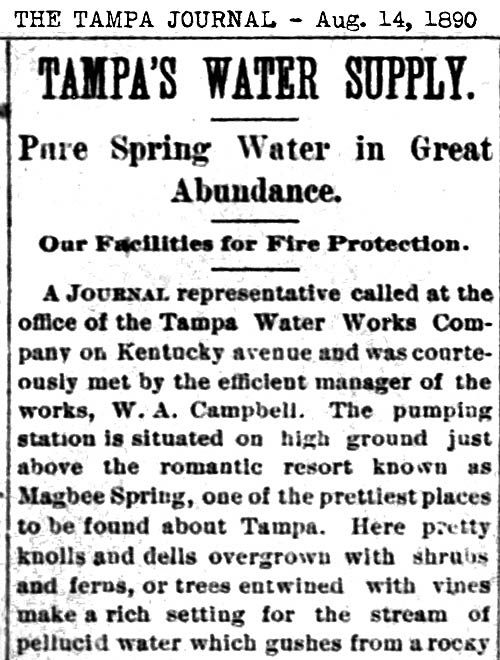 |
 |
| |
|
|
 |
 |
| |
|
|
 |
 |
| |
|
|
 |
 |
| |
|
|
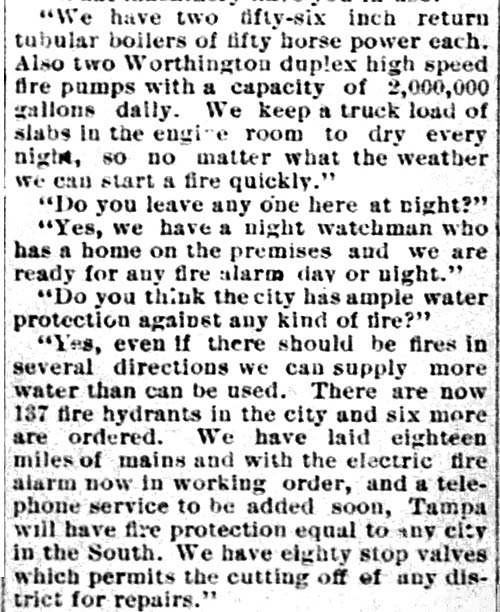 |
 |
| |
|
|
 |
|
DEVASTATING FIRES
Tampa suffered
a series of disastrous fires during 1894. In addition to
seven homes and three small business places, the Tampa
Lumber Company's plant was completely destroyed on July 27
causing a loss of $40,000. The fires emphasized the
fact that Tampa's volunteer fire department and obsolete
fire fighting equipment were entirely inadequate to provide
proper protection.
|
 |
|
Robert Mugge
From the personal collection of his
great-grandson, Robert Mugge. |
By the first decade
of the 1900s, the Jeter Boardman Company and the city were
inundated by complaints about hard water, inadequate expansion
planning, high rates, and demands for improved service.
Damage from several fires was blamed on low water pressure.
A fire on May 23rd, 1905 destroyed a building on the northwest
corner of Franklin and Caro [sic] (Carew) streets, belonging to
noted Tampa businessman, Robert Mugge. Mugge, who was
primarily a liquor dealer, brought suit in the Circuit Court of
Hillsborough County against Tampa Waterworks for failing to
provide adequate fire protection, due to low water pressure,
through a system that was supposed to be "First Class":
"...with a
reservoir capable of holding 100,000 gallons of water,
sufficient to give a pressure on the mains from a hydrant
located at the intersection of Washington and Franklin
streets, and through 100 feet of fire hose and a 1-inch
nozzle, to throw a stream of water vertically to a height or
distance of 50 feet, giving a first-class fire protection..."
The county court
dismissed the suit, in favor of the Tampa Waterworks. But
Mugge took the case all the way to the Supreme Court of Florida,
where the judgment was reversed, "Error to Circuit Court,
Hillsborough County, Joseph B. Wall, Judge.
Read about the details of the case.
The largest
fire in Tampa's history occurred on March 1, 1908 in Ybor
City. The massive fire was most likely caused by a
carelessly tossed cigarette at the Antonio Diaz
boardinghouse at 1914 12th Ave.
Due to some
confusion in the 1908 blaze, firefighters didn't arrive for
45 minutes. The inferno destroyed 171 homes and 42 business
including five cigar factories over 18 1/2 blocks. Losses
from the 1908 fire exceeded $1 million, half of the losses
were covered by insurance. Firefighters were hampered by low
water pressure from the Tampa Waterworks. This problem
became an issue in the aftermath, with critics questioning
whether the private Tampa Waterworks utility favored its
other customers at the expense of Ybor City. It was
suspected that the waterworks had cut the water pressure
because they felt they couldn't meet the demands of its
paying customers.
Many
residents who lost their homes and or their jobs, relocated
to Key West to work in the cigar factories there.
Ironically, many had just left Key West to relocate in
Tampa.
This history of Tampa's water supply continues further down
below at the
MAGBEE SPRING after the
following sections on the the Ybor Ice Works, the Florida
Brewery at the Government Spring, and the Ybor "No Name" Spring.
|
|
THE YBOR ICE WORKS AND THE FLORIDA BREWERY AT GOVERNMENT
SPRING
This 1852 map
of Fort Brooke from the National Archives clearly shows the
location of the Government Spring. Mouse over it to
see it larger.

In 1894, the Ybor City Ice Works built two natatoriums (swimming
pools) at the Government spring - one for whites and one for
blacks. The pools were supplied with 10,000 gallons of spring
water per hour.
|
|

These 1895 maps show the Ybor City Ice Co. with the newly
added swimming pools, and the location of the Government
Spring (label and arrow added to the map) in a pump house
and marked "Artesian well."
Notice that the ice factory was a wood frame structure
(yellow.)
Sanborn Map
Collection at the University of Florida Digital Collection |
 |
| |
|
|
 |
In 1896, with a capital stock of two hundred thousand dollars,
Florida Brewing company was organized by Ybor City cigar
industrialist and entrepreneur Eduardo Manara (who also organized
the Exchange Bank of Tampa in 1894), E. W. Codington and Hugo
Schwab.. The brewery building’s design
was based on the plans of the Castle Brewery in Johannesburg,
South Africa. In addition, Manara underwrote the formation of the
Tampa Gas Company which became Peoples Gas.
The two acre site chosen, at 5th Avenue and 13th Street in Ybor
City, was near to the Government Spring on the east side of 13th
St. across from the ice factory.
At this site, Indians had performed sacred rituals, generals had
planned strategies for the Seminole Indian War, men were hanged
there, and it even had served as a swimming and health resort.
|
|
Factory of the Florida Brewing Company at 1223 5th Avenue and
13th Street, copied from Tampa Tribune Midwinter Edition 1900:
Tampa, Fla.
Burgert Brothers photo from the HCPLC
|
|
The pure spring water was a major influence in the purported
excellent taste of the brewery's product. The site was also
important in that it was next to the railroad which provided
excellent shipping capabilities. |
|

Image courtesy of the Swope Rodante law firm which now occupies
this site.
The Ybor City Ice Works seen in these turn-of-the-century photos
is not the original wood frame structure started by Snodgrass in
1884. These photos show this ice works building was part of the
new brewery, made of brick or block, entirely on the west side of
13th St (the face with the ice works signage) and physically
oriented in line with the brewery, parallel and perpendicular to
the street grid.
The satellite image below shows the buildings of the 1895 map
overlaid on the current area. The site of the pump house for the
Government spring is now located near to and under the edge of a
parking lot on the east side of the new 13th Street, about 140
feet northeast of today's intersection of 5th Avenue and the
streetcar tracks.
Also shown is the Swope Rodante law firm in the old brewery
outlined in red. The site of the original 1884 ice factory
is under the blue arrow.

Sometime
between 1895 and 1899, the old wood frame ice factory and the
pools were removed. The "natatorium" became the site of a
beer packing facility. The red X shows where the ice factory
was.

On the 1903 close up below, You can see the ice factory operations
of the new brewery were carried on in the southeast area of the
building at 13th St. and 5th Ave. Notice the train tracks
that came up from the south on 13th St. and between the
brewery and former site of the ice factory.

|
|

 The
1899 map doesn't show the location of the Government spring
but the description of the brewery states "No connection
with City main, water from artesian well." The
1899 map doesn't show the location of the Government spring
but the description of the brewery states "No connection
with City main, water from artesian well."
This sheet (18) of the map was drawn with north to the left,
so the image at the right is rotated to view with north to
the top. Click the image at left to see a larger
layout in the original orientation.
|
 |
|
The 1915 map below shows how 13th Street was shifted from
its original location at the tracks between the new brewery
and the old ice factory, at some time between 1903 and 1915.
The beer packing house now has become Tampa Wholesale Liquor
& Wine Co., a brick building. The blue dot indicates
the general area of the former artesian well pump house
originally used by the old ice factory. Now in 1915
this area is a wooden carpenter & storage building.


|
|
Present view of
former site of the original ice factory and Government
Spring artesian well.

Place your cursor on the image to overlay labels
The street runoff water drain may have been placed to use
the same drain as the spring.
|
THE "NO NAME" SPRING
 Colonel
Brooke referred to another spring a short distance from the
Government Spring, but the name of this one is unknown. This
small spring was said to have been at 10th Avenue and 16th
Street. Its waters were visible until the late 1970s to early
1980s at 4th and 5th Avenues as it trickled toward the Ybor
Estuary. Two magnificent buildings, El Centro Español and La
Logia del Aguila de Oro, later known as the Labor Temple, were
erected over the creek fed by this spring. Don Jose Acosta built
his home over the spring’s source. Through the ensuing years the
sidewalk and the street in front of the house continued to sink,
a condition which forced Acosta to reinforce the foundations to
his home with annoying frequency. Colonel
Brooke referred to another spring a short distance from the
Government Spring, but the name of this one is unknown. This
small spring was said to have been at 10th Avenue and 16th
Street. Its waters were visible until the late 1970s to early
1980s at 4th and 5th Avenues as it trickled toward the Ybor
Estuary. Two magnificent buildings, El Centro Español and La
Logia del Aguila de Oro, later known as the Labor Temple, were
erected over the creek fed by this spring. Don Jose Acosta built
his home over the spring’s source. Through the ensuing years the
sidewalk and the street in front of the house continued to sink,
a condition which forced Acosta to reinforce the foundations to
his home with annoying frequency.
The first Sanborn map to show evidence of this spring is the
1895 map seen at right. There is no indication of a spring
source on any of the section details north of this section, up
to the section that shows 10th Avenue and 16th Street, nor is
there any indication of the creek north of this section.

1895 Close up - The creek appears to start under 7th Ave. in
front of a grocery store and dwelling at 1514-1516 7th Ave.

1899 - On the map at right, the creek is again indicated as a
"small stream," starting in the undeveloped property on the
south side of 7th Ave, 1516 7th Ave. is labeled "American
House," apparently a dining room. No other section north
of here show a spring or stream in 1899.

1903 - At left, still indicated as a "small stream" and starting
at the same general area.
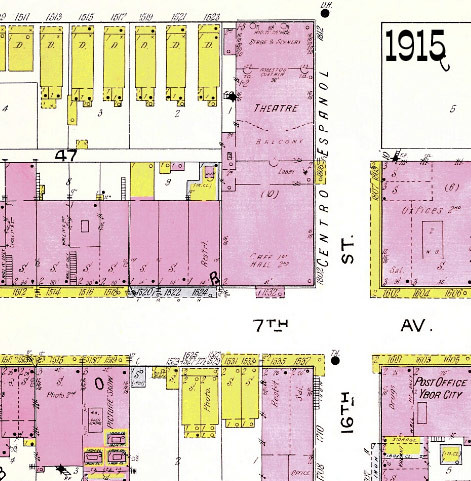
1915 - At right, the stream is no longer indicated at 7th Ave.,
nor at 6th Ave. Instead, it appears as a "ditch" at 5th
Ave. southward. 1915 map below.

Neither the stream or ditch appear on the 1931 Sanborn maps.

|
TAMPA WATER WORKS AT MAGBEE SPRING
(continued from "The Beginning of Tampa's
Waterworks" above.)
This spring was named for a local judge named James T. Magbee, who
used to own much of the property in Tampa Heights in this area.
Born in 1820 in Georgia, he came to Tampa in the late 1840s. He
was a lawyer by profession, and in August 1868 Governor Harrison
Reed appointed him judge of the Sixth Circuit Court. As a
Republican official during Reconstruction, he often aroused public
wrath by compelling white men to serve on the same juries with
blacks. Judge Magbee resigned his office in 1874 after
impeachment proceedings for various charges were brought against
him in the Florida Legislature.
Read more about Magbee and his escapades.
The Jeter-Boardman
Waterworks Company also made use of the Magbee Spring at Highland
Ave and Henderson St.
|
 |
This 1899 map shows the City of Tampa's second pumping
station which was located 1/2 mile west
of Tampa's first pumping station. Since the first
station at Jefferson & Henderson was no longer in use, this
one at the Magbee Spring on Highland and 6th (also known as Henderson Ave.)
became Station #1.
Notice the oval marked "COVERED SPRING" to the left of the
pumping station Apparently, the spring source was on
the east side of Highland Ave. The unmarked inlet from the river at the left was where the Magbee Spring emptied into the river. |
| |
|
|
The City of Tampa was very progressive in its construction
of steam powered pumping stations to bring fresh water to
its citizens, as seen on this 1903 map. Construction of
Tampa's third water works (#2) was already in progress,
allowing the City to continue utilizing the water of Magbee
Spring, and increasing capacity to four million
gallons per day over the second pumping station (#1).
|
 |
| |
|
In 1910 the Tampa Electric Streetcar Company built the hub of
Tampa’s streetcar system just northwest of the area and this
beautiful stretch of river quickly filled in with heavy industrial
uses.


 This
1915 Sanborn map above shows the location of the Tampa Water Works Co. pumping
station in pink on the left with the
spring pool (unlabeled) just below it. Across Highland Ave.
was the old pumping station which was then used in emergencies.
Notice the large 3.5 million gallon, concrete-lined rectangular
reservoir under construction. This
1915 Sanborn map above shows the location of the Tampa Water Works Co. pumping
station in pink on the left with the
spring pool (unlabeled) just below it. Across Highland Ave.
was the old pumping station which was then used in emergencies.
Notice the large 3.5 million gallon, concrete-lined rectangular
reservoir under construction.
At right, close up from same map above. Notice the small circle with a
dot to the right of "24", a 30-ft. tall concrete chimney which can be
seen in the photo below.
Map images courtesy of the University of Florida
Smathers Library Sanborn Map Collection

The Tampa water works pumping station at 1804 Highland Avenue between
7th Avenue and Henderson Street, 1918.
The small structure to the
left of the main building can be seen on the map close up above; it was
an oil pump house.
Burgert Bros. photo from the digital collection of the
Tampa-Hillsborough County Public Library.

Ornamental landscaping and gravel paths at the Tampa water works pumping
station on 1804 Highland Avenue between 7th Avenue and Henderson Street,
1919.
Burgert Bros. photo from the digital collection of the
Tampa-Hillsborough County Public Library.
|
 |
In December of
1919 a devastating fire destroyed much of Tampa's waterfront
along the Hillsborough River in the area of Washington St.
Burgert Bros. photo from the digital collection of the
Tampa-Hillsborough County Public Library.
|
|

1919 Waterfront
Fire -
Photo from USF Digital Collection, Burgert Brothers
(The collection has this photo incorrectly titled "Ybor City
Fire") |
| |
|
In the 1920s, the Magbee spring was surrounded by a lily pond that was a
fashionable spot for Sunday picnics.


Al Severson and Maudie in a rowboat at Tampa Water Works Park,
1925.
Severson
was a photographer for the Burgerts
Burgert Bros. photos from the digital collection of the
Tampa-Hillsborough County Public Library.
THE
WATERWORKS ON THE HILLSBOROUGH RIVER
Even though the Tampa
Waterworks Company continued to provide services for the entire
length of their contract, in 1922 the city
obtained the services of Nicholas S. Hill, Jr., an engineer from
New York, to evaluate options for the future.
 |
|
The original
Water Works filter house, completed in 1925, housed the core
of the facility’s treatment process.
Burgert Bros. photo from the digital collection of the
Tampa-Hillsborough County Public Library. |
After studying
the matter for more than a year, Hill recommended that the city
construct a modern filtration plant on the Hillsborough River, to
be situated just upstream of Tampa Electric's power-generating
dam. The construction began in 1924.
Construction of this facility at 30th Street in Sulphur Springs
(the area, not the water source) replaced Tampa's third pumping
station at the Magbee Spring but allowed the City to continue to
utilize its water. It was built at the height of the Florida 1920s
real estate Boom Times in 1925 and reflects the Mediterranean
Revival style associated with the period.
Local Historic Designation:
2004
Architect: Nicholas S. Hills, Jr.
Builder: Gauger-Korsomo
The
building is now part of the David L. Tippin Water Treatment
facility, a 55-acre facility still in full operation. This
facility houses Florida’s only municipally-owned drinking water
laboratory. Today, the plant produces approximately 90% of the
roughly 65 million gallons of water that is consumed per day by
Tampa residents.

 Most
of Tampa's drinking water is treated surface water from the
Hillsborough River. The river begins in the Green Swamp and winds
its way through Tampa to Hillsborough Bay. In Tampa's Sulphur
Springs area, the river reaches the Hillsborough River Dam. The
Hillsborough River Reservoir, the stretch of river between the dam
and the 40th Street Bridge, impounds more than 1 billion gallons
of water. The reservoir holds Tampa's primary drinking water
source, which is treated at the adjacent David L. Tippin Water
Treatment Facility. Most
of Tampa's drinking water is treated surface water from the
Hillsborough River. The river begins in the Green Swamp and winds
its way through Tampa to Hillsborough Bay. In Tampa's Sulphur
Springs area, the river reaches the Hillsborough River Dam. The
Hillsborough River Reservoir, the stretch of river between the dam
and the 40th Street Bridge, impounds more than 1 billion gallons
of water. The reservoir holds Tampa's primary drinking water
source, which is treated at the adjacent David L. Tippin Water
Treatment Facility.
Treating Tampa's Water at TampaGov.net
The
yellow rectangle at left marks the original waterworks filter
house. The red rectangle marks the original pumping station
below.
|
Today, the
original structure remains the core of a modern, high-tech
water production facility that ensures a safe, reliable
drinking water supply for Tampa residents, visitors and
businesses.
TampaGov.net - Our Water Plant |
 |
To continue the
history of the dam, see the video below, narrated by Jack Harris,
starting at 17:10 time. Some of the above history of the
Jeter-Boardman Waterworks in Tampa comes from this City of Tampa
video.
BACK TO THE MAGBEE SPRING WATERWORKS
By 1931 the original pumping station #1 at Magbee Spring had become a supply house for
storage.
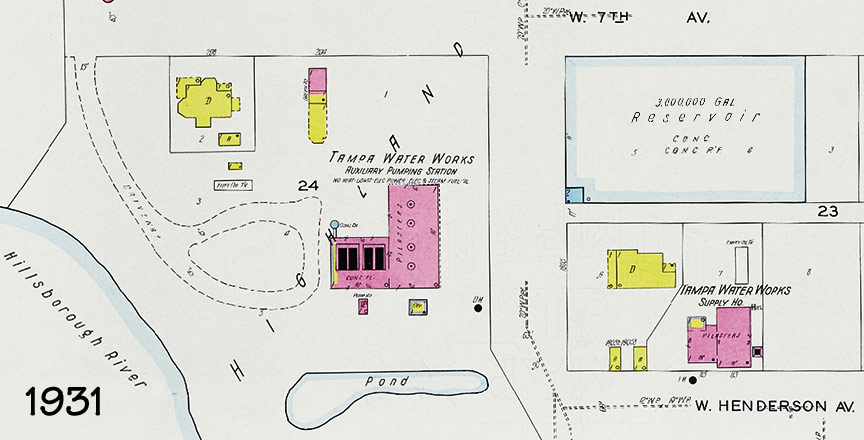

Elise Frank School of Art students painting at Water Works Park, 1804
Highland Avenue, 1948.
Burgert Bros. photo from the digital collection of the
Tampa-Hillsborough County Public Library.
A fish processing plant, a shipyard, a dredging operation and the
City of Tampa’s Police Station and Maintenance Facility in the
1960s ultimately choked off access to the Hillsborough River for
the surrounding neighborhoods and filled in the natural spring
run.

The Magbee Spring at the Tampa
waterworks site, 1950s
Photo from University of South Florida Robertson & Fresh
collection
The
city had turned to other water sources and the
neighborhood languished. By the 1970s, vagrants were living in the
park and bathing in the spring, so the city fenced and padlocked
the property.
| The Dam Story: the story
of the Hillsborough River Dam
City of Tampa video hosted by
Jack Harris
Tampa's waterworks history
starts at 14:56. |
|
| |
|
MAGBEE SPRING RENAMED ULELE
In
February of 2002, after several years of political maneuvering,
the Tampa Water Works building at 1805 N. Highland Ave. was
designated a historically significant city landmark, saving it
from demolition and qualifying the structure for rebuilding
grants.

Photo from City of Tampa Government website - Local Historic
Landmarks, Tampa
| In November of
2006, Chris Longo, a 17-year-old Plant High School senior
presented research on the Ulele/Ortiz history and Judge James T. Magbee,
namesake of the spring at the water works, for his Eagle Scout designation
project. His goal was to
get the name of the Magbee Spring changed to Ulele Spring in honor
of the daughter of the Timucuan tribal chief who lived during the
1500s.
“Ulele is a name people are becoming familiar with,” said
Judge Chris Altenbernd of the 2nd District Court of
Appeal, who inspired Chris Longo to lobby the city to name
the spring in Ulele's honor. “It's a fun part of Tampa's
history.”
As with the legend of the swashbuckling Jose Gaspar,
historians differ on how much of Ulele's story is fact, how
much is fiction and whether she existed at all. “It
seems clear this is a story passed on, possibly through many
people, before it was written down,” Altenbernd said. “So
who knows?” |
|
The spring’s first namesake was not as dignified as the
Ulele story: James T. Magbee, a circuit judge who presided
from 1868 until his forced resignation in 1875. Magbee owned
the spring property and adjacent land, but the judge had a reputation for public
drunkenness and other less-than-honorable deeds.
.
|
 |
|

 |
Images are excerpts from Chris's
reports.
“Should the
alcoholic judge have his name remain on the lifeblood of Tampa’s
first water source?”
Longo wrote to the Tampa City Council.
“Changing
the name from Magbee Spring to Ulele Spring would put dignity back
into the spring and would also establish the Spanish-American
Indian connection in early America.”
The city council
agreed and voted to rename the spring.

|

Nov. 15, 2006 letter from Boy Scouts of America Seminole
Lodge #85, Order of the Arrow Lodge Adviser Jackson L.
Morris to Mayor Pam Iorio urging her to take a
favorable decision on Chris Longo's appeal.
"...While many place names in Florida remind us of the
influences of our history of the Seminole peoples and Spain,
there is little to recall the earlier peoples of our
area--those who left only impressive shell mounds, mostly
now destroyed, but no descendants to champion their cause
and promote their memory. Ulele Springs would be a
fitting tribute to Florida's first inhabitants."
Seminole Lodge #85 Website



133 signatures
supporting Chris's project
|
On Feb. 22, 2007,
Tampa City Council changed the name of the spring from
Magbee to Ulele Springs with the passing of this resolution,
#2007-155, as
proposed by Chris Longo's petition.
Click image to see
it larger.
More about Judge Magbee here at TampaPix
See a video and read more about Ulele Restaurant at the TBO.com article
by Jeff Houck.
Here's more about
Christopher Longo. He is a very talented young man!
Christopher Longo is an American tenor from Tampa, Florida, where
he originally pursued a career in violin before switching to voice
studies at Florida State University. Along with this season’s
chorus work, he will sing in a number of concerts at the Sarasota
Opera House and other venues performing in ensemble scenes as an
Apprentice Artist.
Most recently, he
was a
Bonfils-Stanton Apprentice Artist with Central City Opera in
Colorado, where he performed as Alfredo in Verdi’s La Traviata
and covered the role of Padre in Wasserman’s Man of La Mancha.
With Eastman Opera Theatre he performed in the award-winning
production of Poulenc’s Dialogues of the Carmelites as
Chevalier de la Force, and covered George in Rorem’s Our Town.
Of his Chevalier portrayal, the Democrat and Chronicle
recognized that his "unperturbed purity of tone and precise pitch
placement sharpened a strong dramatic presence.”

Mr. Longo holds a Master of Music degree in Performance and
Literature for Voice from the Eastman School of Music, and a
Bachelor of Music degree in Voice Performance from Florida State
University. At FSU his roles included The Prince in Rusalka,
Nemorino in L'elisir d'amore, Frederick in Pirates of Penzance,
Herr Vogelsang in Der Schauspieldirektor, and Orphée in
Orphée aux enfers. His upcoming engagements include singing in
the chorus and covering Alfredo in Verdi’s La Traviata in
June 2018 for St. Petersburg Opera.
Bravissimo,
Christopher, bravissimo!
RECREATING THE SPRING
and REVIVING THE WATER WORKS BUILDING AS ULELE RESTAURANT
Tom Ries, President of the nonprofit
Ecosphere Restoration Institute, would work diligently for
years to recreate a natural landscape for the spring to enter the
river.
When Ulele Spring was "re-discovered" next to the Tampa's old
Water Works in 2006, Tom Ries of the Ecosphere Restoration
Institute had to see it for himself. Hacking through dense growth
that had gone unchecked for years, Tom discovered the spring boil
just feet off North Highland Avenue near the heavy traffic of
I-275. The spring dropped into a lower pool full of lily pads that
surrounded a small island of palm trees and then the water
disappeared. Marching in a straight line from where the run ended
to the Hillsborough River, Tom found a pipe where the outflow
entered the river. He looked down at the river, and he saw a
manatee looking up, drawn by the crisp, clear water flowing from
the spring. And that's when Tom started working on a plan to
restore the spring, located within shouting distance of downtown
Tampa.
Photos and info from Old Florida - blog by Rick Kilby
|
 |
|
The main source
of the spring seems to be under Highland Ave. according to
this map. A secondary spring can be seen just
northwest of the main spring flow.
|
Tom Ries found another spring on this 1888 plat map of the area
and found that it was located under the water works building and
was being piped into the bay. It's now being piped into the
Ulele run, adding to the flow rate.
In 2010, a project was initiated by the Ecosphere Restoration
Institute to recreate this natural spring run. Money to restore
the spring came from a $50,000 federal grant, $50,000 from the
Southwest Florida Water Management District and $50,000 from the
city. The engineering and design portion of this project was
funded, in part, through the Southeast Aquatic Resources
Partnership’s NOAA Community-based Restoration Program. The water
from the spring pool at that time was piped to the river,
according to city parks spokeswoman Linda Carlo. The restoration
eliminated the pipe and created a basin where water could
pool as it flowed to the river. Approximately 500 feet of
stream was restored and the spring ‘boil’ and associated ecosystem
was also expanded in size and enhanced.
Below is a
before/after view of the spring's cascade from the source pool
leading to the basin.
Place your cursor on it to change it.

In April of
2011 Bob Buckhorn took office as Tampa’s 58th mayor after
winning a runoff election with almost 63 percent of the vote.
Among his goals was to build on the success of the new Tampa
Museum of Art and Curtis Hixon Waterfront Park, bringing more
residents downtown and building cultural attractions in and around
the downtown core.
On September 13, 2011, the newly-elected city council
released a Request for Proposals (RFP) for the acquisition
(long-term lease or lease with option to purchase) and
redevelopment of a portion of the Water Works Building as a café
or restaurant. Columbia Restaurant Group, Ella’s Americana Folk
Art Café, The Straz Center for the Performing Arts, and Water
Works Enterprises all submitted a proposal for review. The
responses
were due Oct. 13, 2011 and can be viewed
online at
www.tampagov.net/pao. A renovation of the building, along with a
planned upgrade of the neighboring Water Works Park, was expected
to energize Tampa Heights.
|
 |
|
Richard
Gonzmart
President & CEO of
Columbia Restaurant Group |
The bid in
January 2012 eventually went to the Columbia Restaurant Group,
owner of seven Columbia restaurants in Florida, including the
iconic founding location in Ybor City. The group bought a 20-year
lease for $1 a year, with three subsequent renewable 20-year
options.
Richard
Gonzmart, president and CEO, argued passionately for his
company’s proposal, drawing on his family’s ties to Tampa Heights.
Among four other bids, the only other serious contender was from
the owners of Ella’s Americana Folk Art Cafe in Seminole Heights.
More importantly,
the Columbia bid won the support of the mayor, who believed the
waterfront was underutilized and in need of restaurants.
Portions of the
above are from
Ulele, a restaurant for the next century, by Tribune Staff
writer/photographer Jeff Houck, Aug. 10, 2014

Place your cursor on the old photos above and below to restore it
into the beautiful Ulele Restaurant
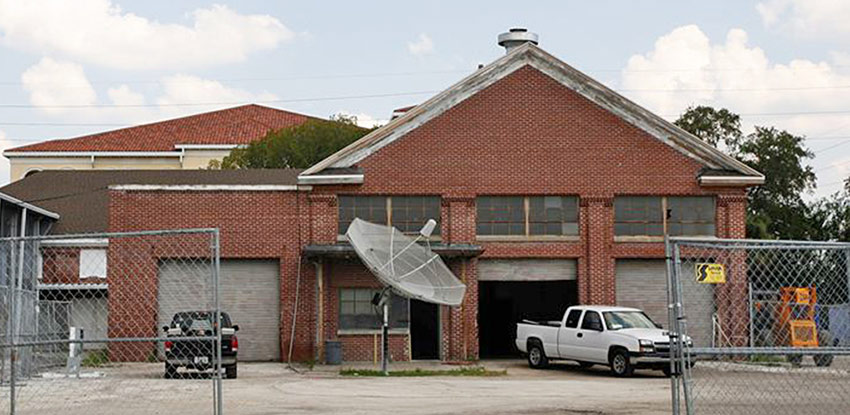
| On August
24th, 2017, the week of Ulele's 3rd anniversary,
Ulele Restaurant shared this post and these photos on their
Facebook page:
With only a few days until we celebrate our third
anniversary on Saturday, it seems fitting to look back five
years ago to the summer of 2012, when Ulele was more of an
idea in fourth-generation Columbia Restaurant Group
President and CEO Richard Gonzmart's mind than a restaurant
and new riverfront gathering place for Tampa.
In 2012, the
red-brick building of Water Works No. 3 was still being used
by the city of Tampa as a makeshift garage and storage
facility. The roof was dilapidated. Windows were either
malfunctioning or boarded to prevent intruders from living
inside.
A burn mark
scarred the concrete footer inside from where someone had
made a campfire. The Tampa Riverwalk stopped just south of
Kennedy Boulevard with a promise of extending north. Ulele
Spring was choked with weeds and spilled tens of thousands
of gallons of fresh into the Hillsborough River through an
earth-covered pipe instead of the lagoon that stands today.
The Water
Works building had to be gutted to the shell and rebuilt
from the inside out if it was to become Ulele.
Overgrown
and deserted land next door had yet to be remade into Water
Works Park with a stage, boat docks, dog park and a public
splash park for children.

A 2012 view of the park at the west end of the waterworks building
- Photo by Tom Ries from the Southeast Aquatics website.
Area top of photo where the new spring basin would be constructed.
The City also solicited bids on a project to extend the Riverwalk
at the park north to Seventh Avenue and south to Doyle Carlton
Drive. Work started in the first quarter of 2012.
City officials also worked on plans to add lighting and decorative
fencing and restore Ulele Spring.
Five years
later, the award-winning, native-inspired restaurant and
craft brewery located in Tampa Heights on the northern end
of the Riverwalk is open for lunch, dinner and private
events. In 2014, Ulele earned a prestigious
Golden Spoon
Award from Florida Trend magazine. Earlier in 2017,
OpenTable named it among the Top 100 U.S. Hot Spots for
2017. Ulele's success has become a catalyst for the revival
of the historic Tampa Heights neighborhood where brothers
Richard and Casey Gonzmart were born. |
|
 |
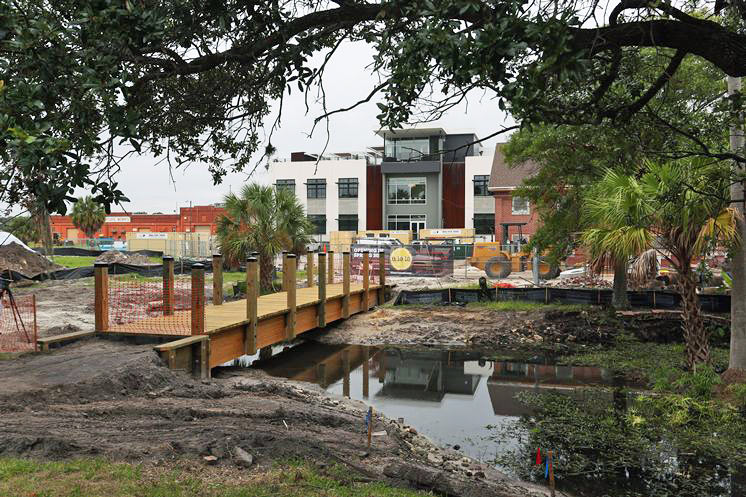
A view of the offices of the Beck Group, architects and
construction team of the waterworks building.
Ulele Spring will soon will be a feature in Water Works Park, a
stop along the Tampa Riverwalk.
By Elisabeth Parker, Times Staff Writer, photo by Skip O'Rourke -
Friday, February 21, 2014

Feb. 2014 Tampa's old Water Works Building slowly transforms to
Ulele restaurant - Tampa Bay Times

Construction on the new spring basin, April 2014
Old Florida blog - Ulele Spring 2.0

Construction on the new spring basin, April 2014
Old Florida blog - Ulele Spring 2.0

The Ulele Spring run to the Hillsborough River under restoration
and soon ready for planting native plants later that month or in
early June. Rains earlier in the month delayed the project.
Once-forgotten spring may soon flow again - BY LENORA LAKE Special
Correspondent Published: May 21, 2014
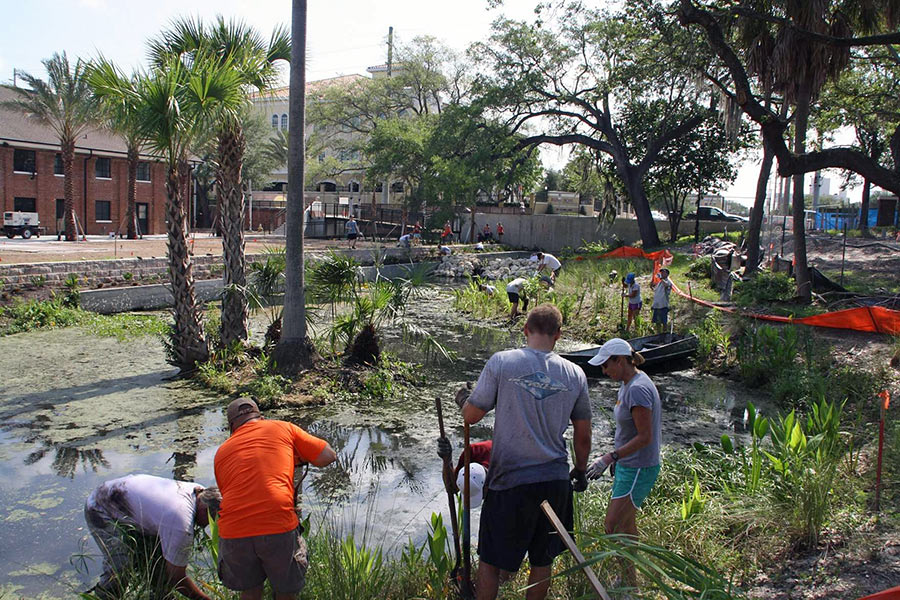
Volunteers helped on May 10, 2014 with the removal of invasive
species of plants and the planting of native ones at Ulele
Springs,
Another planting was to be held in late May or early June.
Once-forgotten spring may soon flow again - BY LENORA LAKE Special
Correspondent Published: May 21, 2014
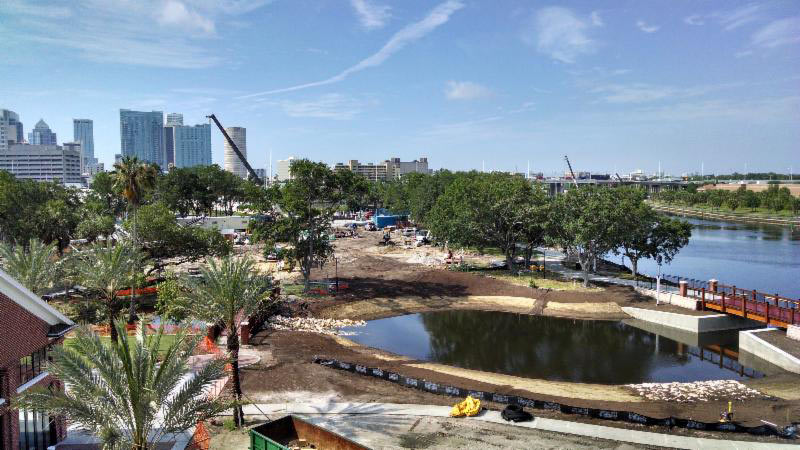
Plan Hillsborough - River board supports Ulele Springs restoration
On August 12, 2014,
the city celebrated the newly completed Water Works Park in
historic Tampa Heights with a formal ribbon cutting at followed by
a large festival in the park including commemorative fireworks on
Saturday, August 16, 2014.
The 5-acre Water
Works Park includes a play area modeled after a ship, splash pad,
8,500 sq. ft. dog run, performance pavilion, and open lawn for
events. The Tampa Riverwalk was also extended to run throughout
the park along the Hillsborough River. A kayak launch, eight boat
slips and a water taxi stop will be installed once the permits are
approved. Ulele Spring, formerly called Magbee Spring, was
restored and opened to river. In addition to the park improvements
and spring restoration, the City of Tampa leased the historic
Water Works Building adjacent to the park to the Columbia
Restaurant Group. Ulele represents a $5 million renovation of the
former city pumping station.

Oct. 2015
Photo by TampaPix
Today, Ulele's spring shines as the focal piece of the City of Tampa’s
new Water Work’s Park along the Riverwalk and is a natural feature that
is drawing visitors world-wide to the area and enhancing, not only the
habitat for fish and wildlife, but providing positive economic and
recreational opportunities for years to come.

Oct. 2015
Photo by TampaPix
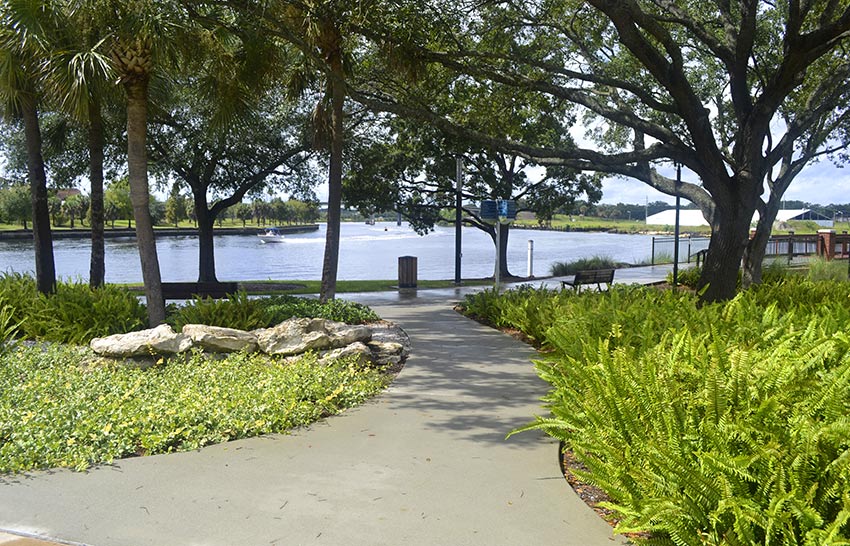
Oct. 2015
Photo by TampaPix

Photo by Tom Ries at SARP website below.
See the Southeast Aquatics Resources Partnership website for a detail
and timeline of the whole project.

The Ulele Spring source, Oct. 2015
Photo by TampaPix

Oct. 2015
Photo by TampaPix

Oct. 2015
Photo by TampaPix
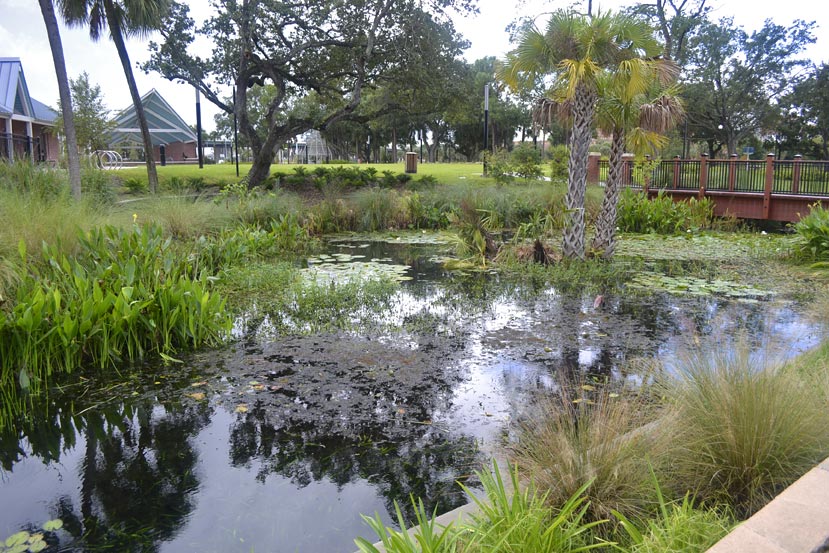
Oct. 2015
Photo by TampaPix
|
 |
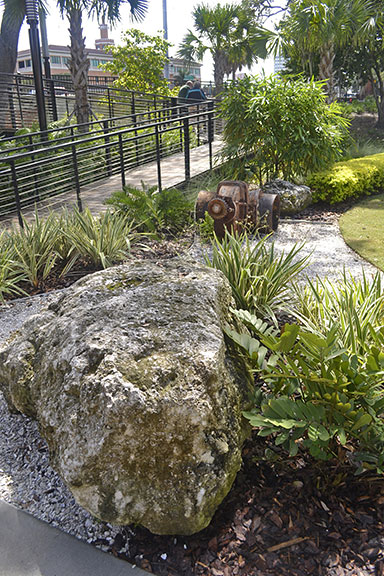 |
|
Oct. 2015
Photos by TampaPix |

Oct. 2015
Photo by TampaPix

Oct. 2015
Photo by TampaPix

Oct. 2015
Photo by TampaPix

Feb. 11, 2017
Photo by TampaPix

The Beck Group office
building, Feb. 2017
Photo by TampaPix

Looking west towards the spring
basin and the Hillsborough River, Feb. 11, 2017
Photo by TampaPix

Feb. 11, 2017
The pedestrian bridge over the spring run and the event pavilion.
Photo by TampaPix


Click map to view larger
Image from
Old Florida blog - Ulele Spring 2.0
|










 Ulele is a native-inspired restaurant and brewery, using fresh
fruits, vegetables, seafood and other proteins from Florida when they
are available, just as my ancestors did. Open since August 2014, Ulele
sits on the banks of the Hillsborough River next to the Ulele Spring. It
is adjacent to the Water Works Park, which has been transformed into a
family-friendly park thanks to our Tampa Mayor and City Council.
Ulele is a native-inspired restaurant and brewery, using fresh
fruits, vegetables, seafood and other proteins from Florida when they
are available, just as my ancestors did. Open since August 2014, Ulele
sits on the banks of the Hillsborough River next to the Ulele Spring. It
is adjacent to the Water Works Park, which has been transformed into a
family-friendly park thanks to our Tampa Mayor and City Council.

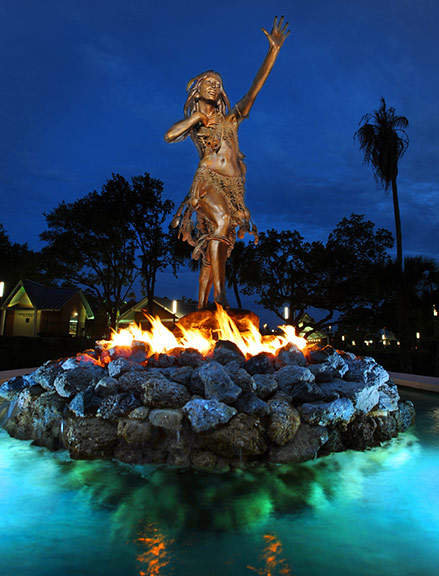






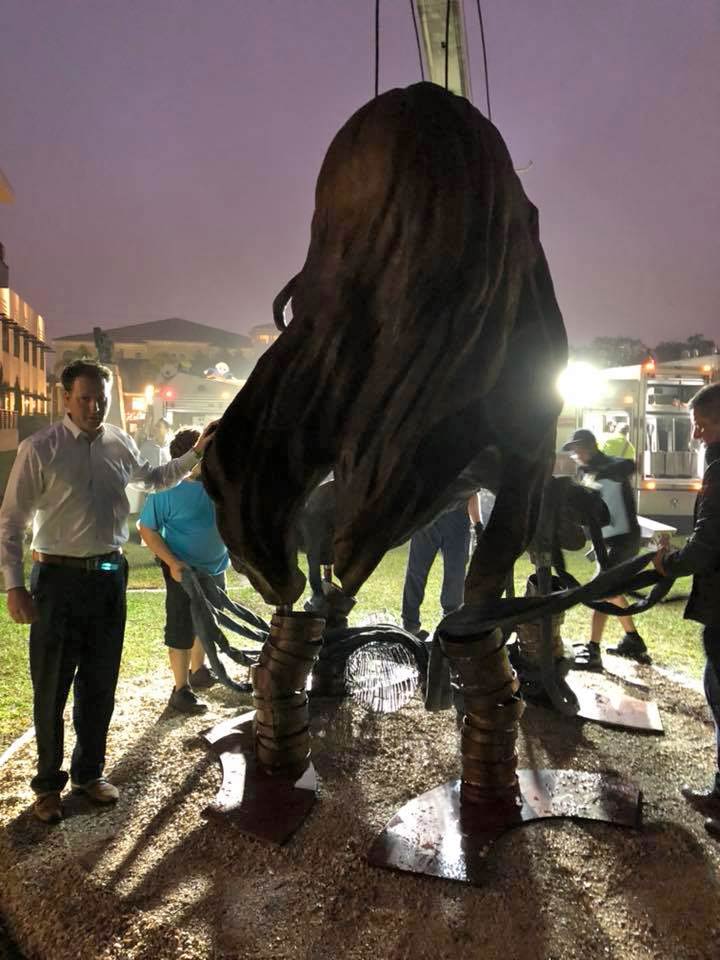










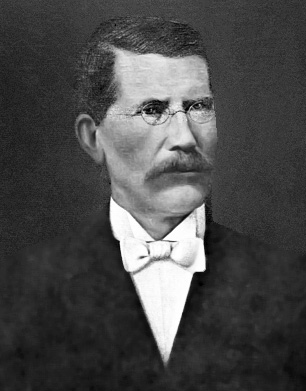


 Arthur Edwin Boardman,
President of the Macon (Georgia) Gas, Light & Water Co., had been
elected city engineer in Macon in 1872.
Arthur Edwin Boardman,
President of the Macon (Georgia) Gas, Light & Water Co., had been
elected city engineer in Macon in 1872. 




































 Colonel
Brooke referred to another spring a short distance from the
Government Spring, but the name of this one is unknown. This
small spring was said to have been at 10th Avenue and 16th
Street. Its waters were visible until the late 1970s to early
1980s at 4th and 5th Avenues as it trickled toward the Ybor
Estuary. Two magnificent buildings, El Centro Español and La
Logia del Aguila de Oro, later known as the Labor Temple, were
erected over the creek fed by this spring. Don Jose Acosta built
his home over the spring’s source. Through the ensuing years the
sidewalk and the street in front of the house continued to sink,
a condition which forced Acosta to reinforce the foundations to
his home with annoying frequency.
Colonel
Brooke referred to another spring a short distance from the
Government Spring, but the name of this one is unknown. This
small spring was said to have been at 10th Avenue and 16th
Street. Its waters were visible until the late 1970s to early
1980s at 4th and 5th Avenues as it trickled toward the Ybor
Estuary. Two magnificent buildings, El Centro Español and La
Logia del Aguila de Oro, later known as the Labor Temple, were
erected over the creek fed by this spring. Don Jose Acosta built
his home over the spring’s source. Through the ensuing years the
sidewalk and the street in front of the house continued to sink,
a condition which forced Acosta to reinforce the foundations to
his home with annoying frequency.









 This
1915 Sanborn map above shows the location of the Tampa Water Works Co. pumping
station in pink on the left with the
spring pool (unlabeled) just below it. Across Highland Ave.
was the old pumping station which was then used in emergencies.
Notice the large 3.5 million gallon, concrete-lined rectangular
reservoir under construction.
This
1915 Sanborn map above shows the location of the Tampa Water Works Co. pumping
station in pink on the left with the
spring pool (unlabeled) just below it. Across Highland Ave.
was the old pumping station which was then used in emergencies.
Notice the large 3.5 million gallon, concrete-lined rectangular
reservoir under construction. 







 Most
of Tampa's drinking water is treated surface water from the
Hillsborough River. The river begins in the Green Swamp and winds
its way through Tampa to Hillsborough Bay. In Tampa's Sulphur
Springs area, the river reaches the Hillsborough River Dam. The
Hillsborough River Reservoir, the stretch of river between the dam
and the 40th Street Bridge, impounds more than 1 billion gallons
of water. The reservoir holds Tampa's primary drinking water
source, which is treated at the adjacent David L. Tippin Water
Treatment Facility.
Most
of Tampa's drinking water is treated surface water from the
Hillsborough River. The river begins in the Green Swamp and winds
its way through Tampa to Hillsborough Bay. In Tampa's Sulphur
Springs area, the river reaches the Hillsborough River Dam. The
Hillsborough River Reservoir, the stretch of river between the dam
and the 40th Street Bridge, impounds more than 1 billion gallons
of water. The reservoir holds Tampa's primary drinking water
source, which is treated at the adjacent David L. Tippin Water
Treatment Facility. 
























